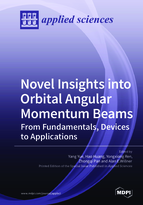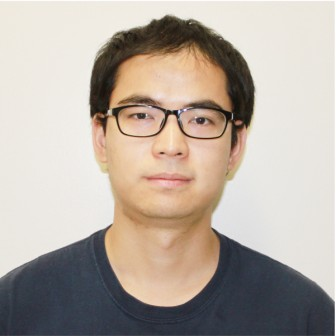Novel Insights into Orbital Angular Momentum Beams: From Fundamentals, Devices to Applications
A special issue of Applied Sciences (ISSN 2076-3417). This special issue belongs to the section "Optics and Lasers".
Deadline for manuscript submissions: closed (30 April 2019) | Viewed by 43918
Special Issue Editors
Interests: intelligent photonics; optical communications; optical perception; optical chip
Special Issues, Collections and Topics in MDPI journals
Interests: vortex beams and applications; coherent communications; digital signal processing
Special Issues, Collections and Topics in MDPI journals
Interests: orbital angular momentum beams; space–division multiplexing (SDM) technologies; free-space optical communications; quantum communications; laser beam propagation; adaptive optics
Interests: optical communications and networking; digital signal processing; optical sensing
Special Issues, Collections and Topics in MDPI journals
Special Issue Information
Dear Colleagues,
It is well-known now that angular momentum carried by elementary particles can be categorized as spin angular momentum (SAM) and orbital angular momentum (OAM). Since the early 1900s, Poynting recognized that a particle, such as a photon, can carry SAM, which has only two possible states, i.e., clockwise and anticlockwise circular polarization states. However, only fairly recently, in 1992, Allen et al. discovered that photons with helical phase fronts can carry OAM, which has infinite orthogonal states. In the past two decades, the OAM-carrying beam, due to its unique features, has gained increasing interest from many different research communities, including physics, chemistry and engineering. Its twisted phase front and intensity distribution have enabled a variety of applications, such as micromanipulation, laser beam machining, nonlinear matter interactions, imaging, sensing, quantum cryptography and classical communications.
This Special Issue aims to explore the novel insights of OAM beams. It will focus on state-of-the-art advances in fundamental theories, devices and applications, as well as future perspectives of OAM beams. Topics of interest include, but are not limited to, the following areas:
- Fundamental principles and properties of structured light beams.
- Technology and device to generate, manipulate and detect OAM light beams.
- Micromanipulation using OAM beams, such as optical tweezers, optical trapping, particle acceleration.
- Spectroscopy, microscopy, imaging, sensing technology using vortex beams.
- Light-matter interaction by vortex beams, including laser machining and nonlinear interactions.
- OAM-based spatial mode encoding/multiplexing for quantum cryptography and classical communications.
Dr. Yang Yue
Dr. Hao Huang
Dr. Yongxiong Ren
Prof. Zhongqi Pan
Prof. Alan E. Willner
Guest Editors
Manuscript Submission Information
Manuscripts should be submitted online at www.mdpi.com by registering and logging in to this website. Once you are registered, click here to go to the submission form. Manuscripts can be submitted until the deadline. All submissions that pass pre-check are peer-reviewed. Accepted papers will be published continuously in the journal (as soon as accepted) and will be listed together on the special issue website. Research articles, review articles as well as short communications are invited. For planned papers, a title and short abstract (about 100 words) can be sent to the Editorial Office for announcement on this website.
Submitted manuscripts should not have been published previously, nor be under consideration for publication elsewhere (except conference proceedings papers). All manuscripts are thoroughly refereed through a single-blind peer-review process. A guide for authors and other relevant information for submission of manuscripts is available on the Instructions for Authors page. Applied Sciences is an international peer-reviewed open access semimonthly journal published by MDPI.
Please visit the Instructions for Authors page before submitting a manuscript. The Article Processing Charge (APC) for publication in this open access journal is 2400 CHF (Swiss Francs). Submitted papers should be well formatted and use good English. Authors may use MDPI's English editing service prior to publication or during author revisions.
Keywords
- Orbital angular momentum
- Structured light beam
- Vortex beam
- Nanoparticle
- Light-matter interaction
- Integrated photonics
- Nanophotonics
- Metamaterials
- Plasmonics
- Fiber optics
- Free space optics
- Spectroscopy
- Microscopy
- Imaging
- Sensing
- Quantum cryptography
- Communications
- Space division multiplexing and mode division multiplexing
- Visible, infrared, radio wave, microwave, terahertz










